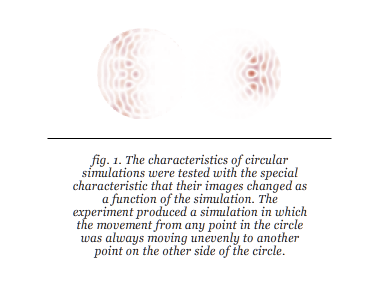In 2009, an important experiment dubbed Tria-S took place at S-77, a facility built at the immediate vicinity of the Judge's Room and supervised by ?????? (until [his] death in 2011). A research team led by ??????? performed several reality tests, and their results turned out to prove that the phenomenon studied was not a simulation.
??????? and [her] team discovered that, under certain circumstances, circular simulations were replicable regardless of the distance separating them from their source. Furthermore, each simulation always seemed to be what the other was as if the two were one. Their movements were perfectly synchronized. Their speeds were matching. The only differences, random and rare, were negligible (torsions, radiometric variations, elasticity of the sides). ??????? and her team proposed the theory that, despite their multiplicity, the simulations were one single gigantic simulation.
To understand what happened at S-77, we must first understand what simulations are. A simulation is a four-dimensional non-incarnated event [or, in the words of ???????, a Dasein deprived of substance]. To create a simulation, the being to be simulated is converted into a gaussian laser beam. The beam is then condensed (transverse mode) and doubled to create a dual- (or stereo-) interference pattern. It is this double pattern that generates the simulation.
The absolute vividness of such simulations is not the only surprising characteristic of the simulations created at S-77. If a simulation of a banana is cut in half and then illuminated by a laser, each half will still be found to contain the entire image of the banana. And if the halves are divided again, each bit will be found to contain an intact version of the original simulation. Every divisible part of a simulation contains itself. [This very aspect most certainly led Imp Kerr to study simulations, and most particularly their serendipity and "range."]
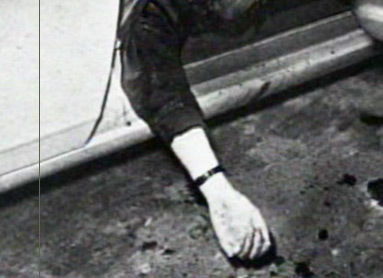
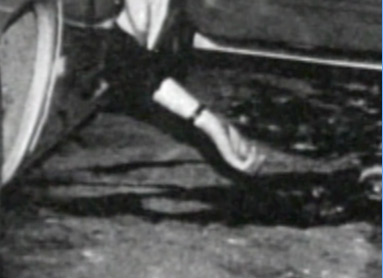
Picture 1 & 2. Simulation of one corpse, divided into simulation R and simulation B. Each half-simulation contains the whole version of the other simulation.
Most observers struggled under the bias that the only procedural scheme by which a phenomenon is understood is its mental dissection by the imagination in relation to experience. Simulations generated at S-77 demonstrate otherwise. They are divisible, but their entirety is not, suggesting that the appearance of simulations should never be considered, for simulations have no appearance.
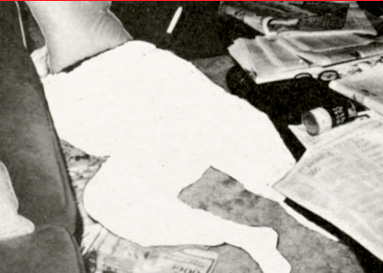
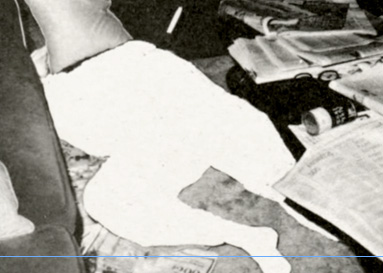
Pictures 3 & 4. Simulation of corpses (R & B), Las Vegas, 2008 (antedated). If two simulations are different from each other, they still are one same simulation.
??????? believed the reason simulations were able to remain in perpetual phase with one another regardless of the absence of alterity was because alterity was itself a simulacrum.
To teach this discovery to people with an IQ inferior to 80, ??????? imagined an aquatic installation (New York, 2011):
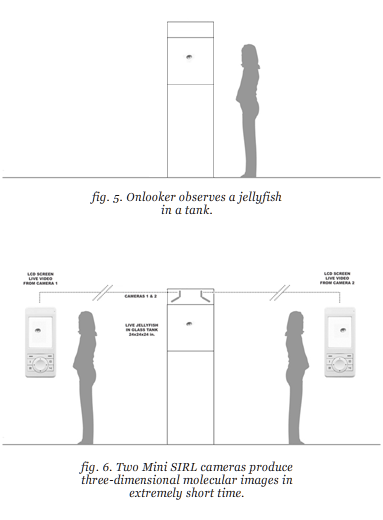
In Installation 1 (fig. 5), a subject was standing in front of a tank containing a jellyfish.
In Installation 2 (fig. 6), a subject was unable to see the tank directly and her knowledge about the tank and what it contained was coming from two video cameras, aimed at the tank at oblique angles. As the subject stared at the two monitors, she assumed that the images of the jellyfish on each screen were separate entities. Because the cameras were set at different angles, the images were slightly different. But as the subject continued to watch, she eventually became aware that there was a certain relationship between the two jellyfish. When one turned, the other also made a slightly different but corresponding turn; etc. The subject remained unaware of the full scope of the situation, and concluded that the jellyfish were communicating with one another. This was not the case. There was only one jellyfish.
Conclusion: The whole time we see everything while thinking we see a portion of everything. We always have in front of us the different facets of a same unity that are indivisible, as is the previously mentioned banana.
Conclusion of the conclusion: Since everything at S-77 [as well as at the Judge's Room] was experienced simultaneously, it was determined that the ultimate simulation was itself a projection.
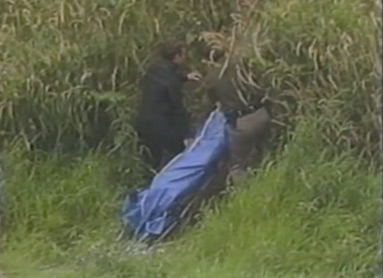
Picture 5. Two men, possibly Billy Gumm and Jimmy Brodkey, carrying the corpse of Billy Gumm in Upstate New York.
Of course ??????? got ??????? wrong, but this theory, that people at S-75 believed to be based on Imp Kerr's ???????, was elucidating the equation of darkness of the Judge's Room [light + shadow = shadow], and validating, peremptorily, the Gumm/Brodkey simulation, the S-52 simulation, and, most importantly, the Kerr simulation. Conversely, it proved that ??????? was not a simulation.
[Remark: It is not documented as to just how ???????'s theory became associated with Imp Kerr's writings.]
